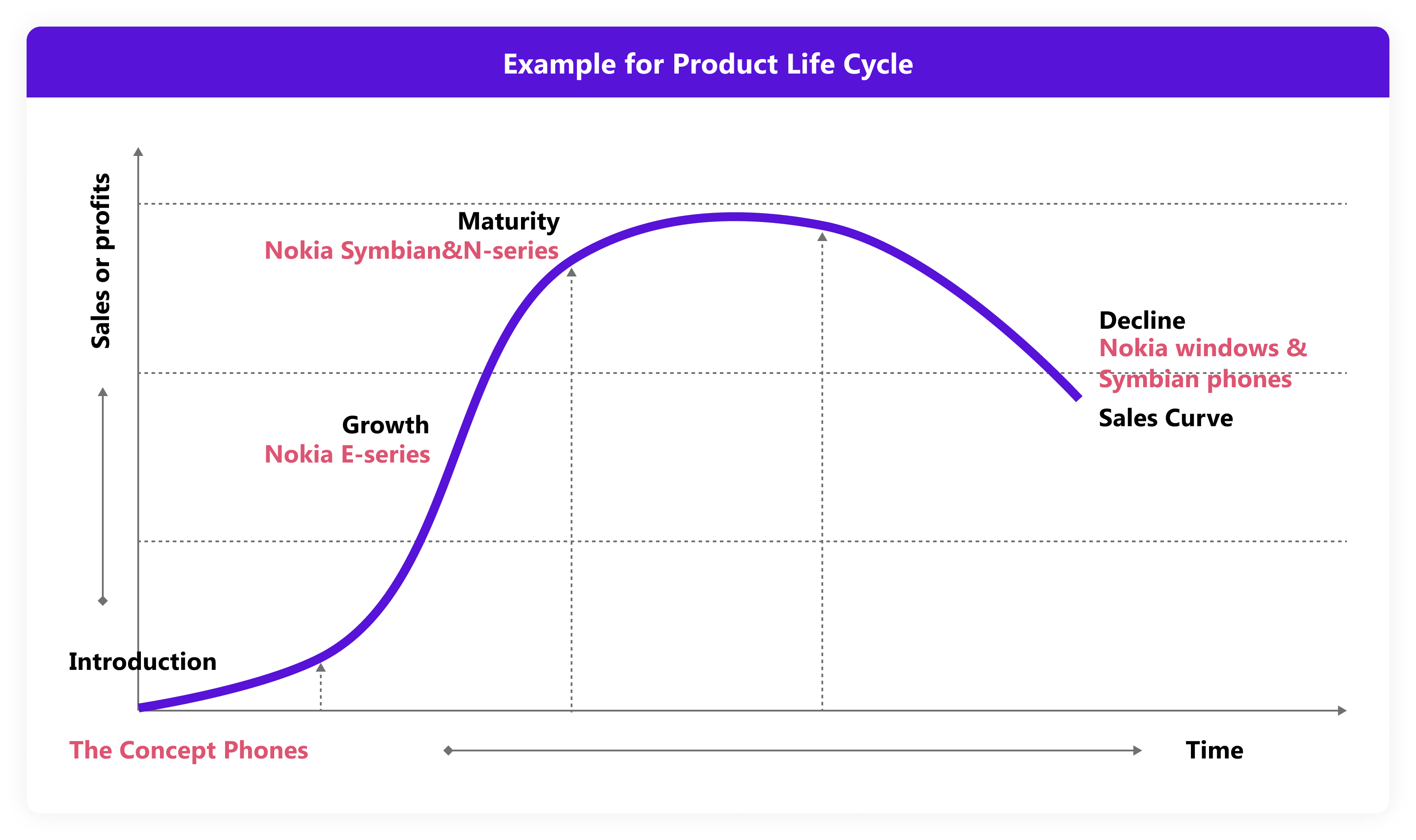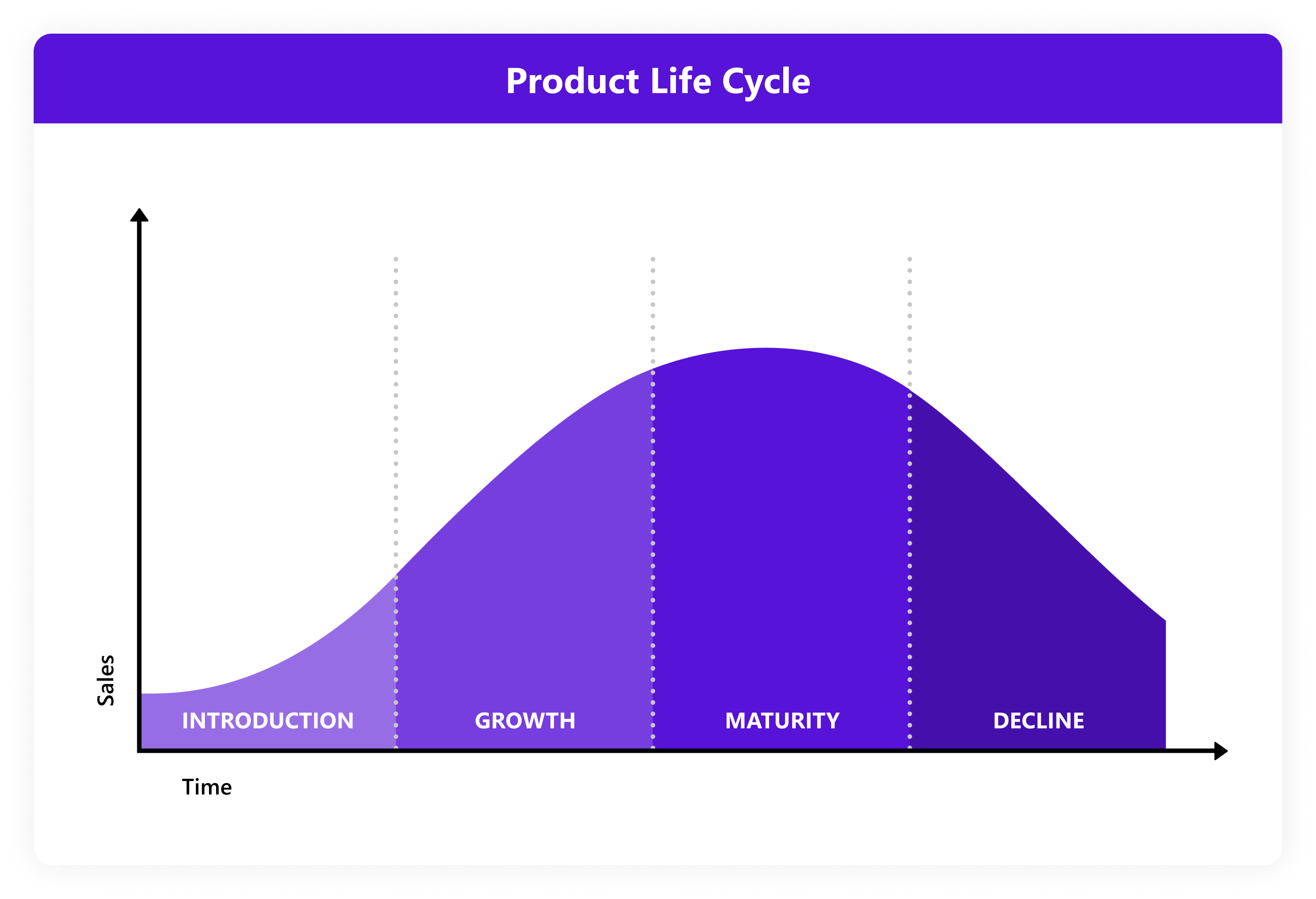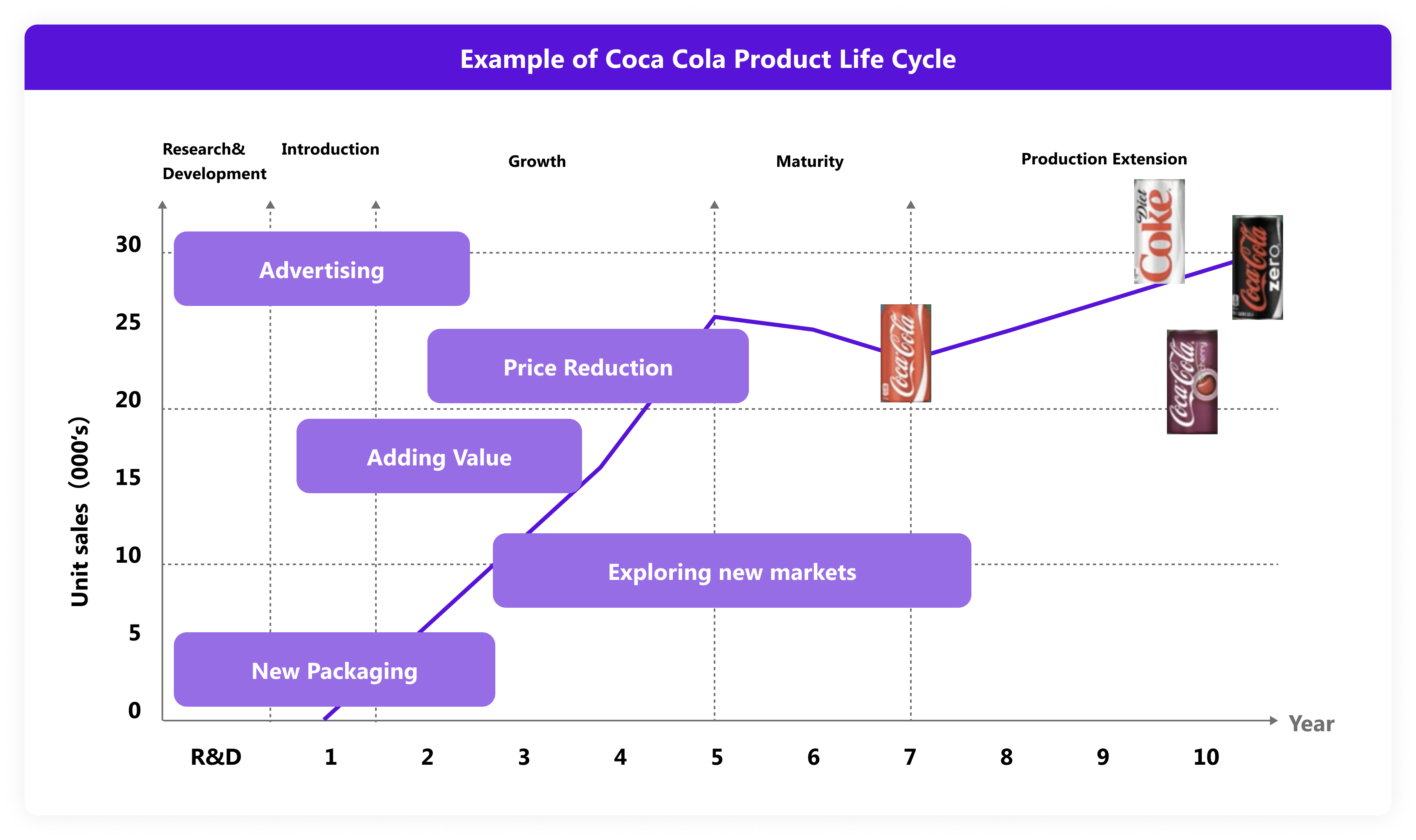¶ Product Lifecycle
¶ What it is
The product lifecycle describes the critical life stages of a product from inception and launches to sunset and archival. This concept is used by management and marketing professionals as a framework for deciding when it is appropriate to increase investment and advertising, reduce prices, expand to new markets, or redesign the product.
¶ Why it is useful
It informs management of how the product is performing and what strategic approaches might help the business to get the most out of the current lifecycle stage.
A company can change how it plans resources, which products to push, how to allocate staff time, and what innovations they want to work on next with better precision.
As an overarching framework, the product lifecycle is therefore also very useful for portfolio management to help ensure that the company has good products in each stage - a set of mature products that generate revenue today, as well as up-and-coming innovation that will help sustain tomorrow.

¶ Exercises for which the Product Lifecycle is useful
Businesses use the product lifecycle to achieve the following:
- Product portfolio strategy
Knowing when to launch new products that might replace or cannibalise older products when returns start waning and a new line can help replace the dwindling revenues.
- Decide the pricing strategy.
The lifecycle can help inform pricing strategy to ensure that the company reaps the optimal returns as adjusted by the demand and maturity of the product.
- Design a marketing strategy
Each stage comes with a different marketing logic, from early brand building and awareness to later focusing on retention and reducing churn.
- Plan and help transit before the product begins to decline
Acting before the product enters the decline stage will reduce risks and resource waste for the company.
¶ Stages of Product Lifecycle
0 Development Stage
Find the potential of the business and validate the primary concepts. Put into implementation if the validation shows a promising result.
1 Introduction Stage
Launching and advertising the product to gain traction with the target customer base.
2 Growth Stage
Gaining prominence with target users and continuing growth through organic spread within the community.
3 Maturity Stage
Reaching maximum profit and productivity potential regarding the critical opportunity tackled.
4 Decline Stage
Impact, user base, and revenues decline until sunsetting.

¶ How is it done
- Get your team familiar with the product lifecycle and its various stages. Review the criteria and implications of each stage to ensure a thorough understanding.
- Locate different offerings in your portfolio on the lifecycle. Where are they currently, based on the indications from the market performance?
- Discuss the implications of the current stages of the various products.
- What do they mean by marketing and pricing?
- Do we need to push on some fronts to change their lifecycle trajectory?
- Do we have enough in the pipeline to be well covered across all stages?
- Repeat this exercise regularly, e.g., every quarter, to ensure you have a firm grasp on developing your offering portfolio.
¶ Do's & Don't
Do's
- Take a portfolio view, don’t just look at single products.
- Discuss holistically what the implications of the analysis are.
- Drive concrete action based on insight.
Don't
- Don’t rely on intuition when judging the lifecycle stage. Use as much data as possible to ensure your analysis makes sense.
¶ Tools needed
- Product Lifecycle chart and detailed information
- Virtual whiteboard or text edit to capture notes
¶ Product Lifecycle Management
¶ What it is
Product lifecycle management (PLM) is the process of managing the whole lifecycle of a product from introduction to sunsetting. It consists of developing, planning, distributing, marketing, operating, and servicing the product.
¶ Why it is useful
With the whole process being planned and monitored, the product and the related expenses spent in different phases of the lifecycle and the strategies of sales, operating, and servicing can be steered in the right direction. All these ensure that the product in each stage is treated correctly and that the company resources are utilised reasonably.
¶ When to use it & Who is involved
During the whole life of a product, PLM is recommended to be adopted to help to get a smooth transition between different phases and even help extend the most profitable phase.
The teams of business, marketing, and product are involved.

¶ Useful Tips
¶ Challenges in PLM
Product lifecycle management is essential. However, some common challenges make it complicated:
- Separate departments, systems, and different processes reduce the integrity, and the shared vision still needs to be achieved
- Overwhelming amounts of useless data distract from efficient analysis
- Frequently changing requirements slow down the product improvements
- New tools accumulate but are not well integrated with relevant systems
The key to overcoming the challenges already lies within them.
